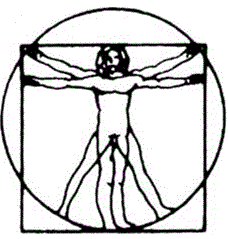Neurofeedback, Biofeedback, and Migraines
Neurofeedback has been shown to help reduce the frequency, duration, and intensity of migraines. One notable study by Stokes (2010) found that 70% of participating patients experienced at least a 50% reduction in frequency of headaches, and these results were sustained an average of 14.5 months after treatment. The medication group showed half of the participants experienced 50% improvement, however, these results required continued use of the medications which often have unwanted side effects.
Passive Infrared (PIR) Hemoencephalography (HEG) biofeedback was used in addition to EEG Biofeedback in the 2010 study by Stokes. HEG biofeedback is conducted with a sensor over the forehead which detects and monitors blood flow in the brain. The brain requires more oxygenated blood in areas that are currently in use, and in monitoring blood flow in certain areas of the brain, HEG biofeedback can effectively train the brain to provide necessary blood flow (which provides oxygen and glucose) for proper function. In Stokes’ research, HEG biofeedback was introduced on about the tenth session and utilized along with neurofeedback every 2nd to 3rd session thereafter.
Another study conducted by Jonathan E. Walker, M.D., in 2011 found that 54% of those who received neurofeedback therapy reported complete relief from their migraine headaches while an additional 39% experienced at least 50% reduction in migraine frequency. Of those in the medication control group 68% reported no change, 20% reported less than 50% reduction in frequency, and 8% reports 50% or greater reduction in headache.
Heart rate variability biofeedback is found to be effective for short term and long term outcomes of reducing the frequency, intensity and/or duration of migraines. Heart rate variability biofeedback stimulates the parasympathetic reflexes which may produce body autonomic activity characteristic of relaxation, thus directly counter stress effects.
In an analysis done of fifty-five studies in which biofeedback was used to treat migraines, Martin Nestoriuc (2007) found that biofeedback can be used as an effective alternative to medical treatment for long-term prevention and for patients suffering from chronic migraines.
At Behavioral Medicine P.C. our clinicians use a combination of EEG, HEG and HRV biofeedback to help a person achieve the most optimal outcome. Neurofeedback and Biofeedback are trainings that encourage the brain and body to become more efficient, positive and flexible.
For many people, migraines are associated with an extremely painful headache accompanied with visual disturbance, nausea/vomiting, and sensitivity to lights, sounds, and smells. Migraines can be with or without aura. Aura is defined as an attack of neurological symptoms that include visual, sensory, speech, motor or other central nervous symptoms which generally last a few minutes and are then followed by a migraine headache. While there are medications available to help prevent or diminish migraines, these are a band-aid solution for the brains over reaction to external stimuli. Some medication can actually have a rebound effect where the headache is initially improved by medication and then later the headache returns at a higher level of intensity than it was initially.
Conditions Improved by Neurofeedback

